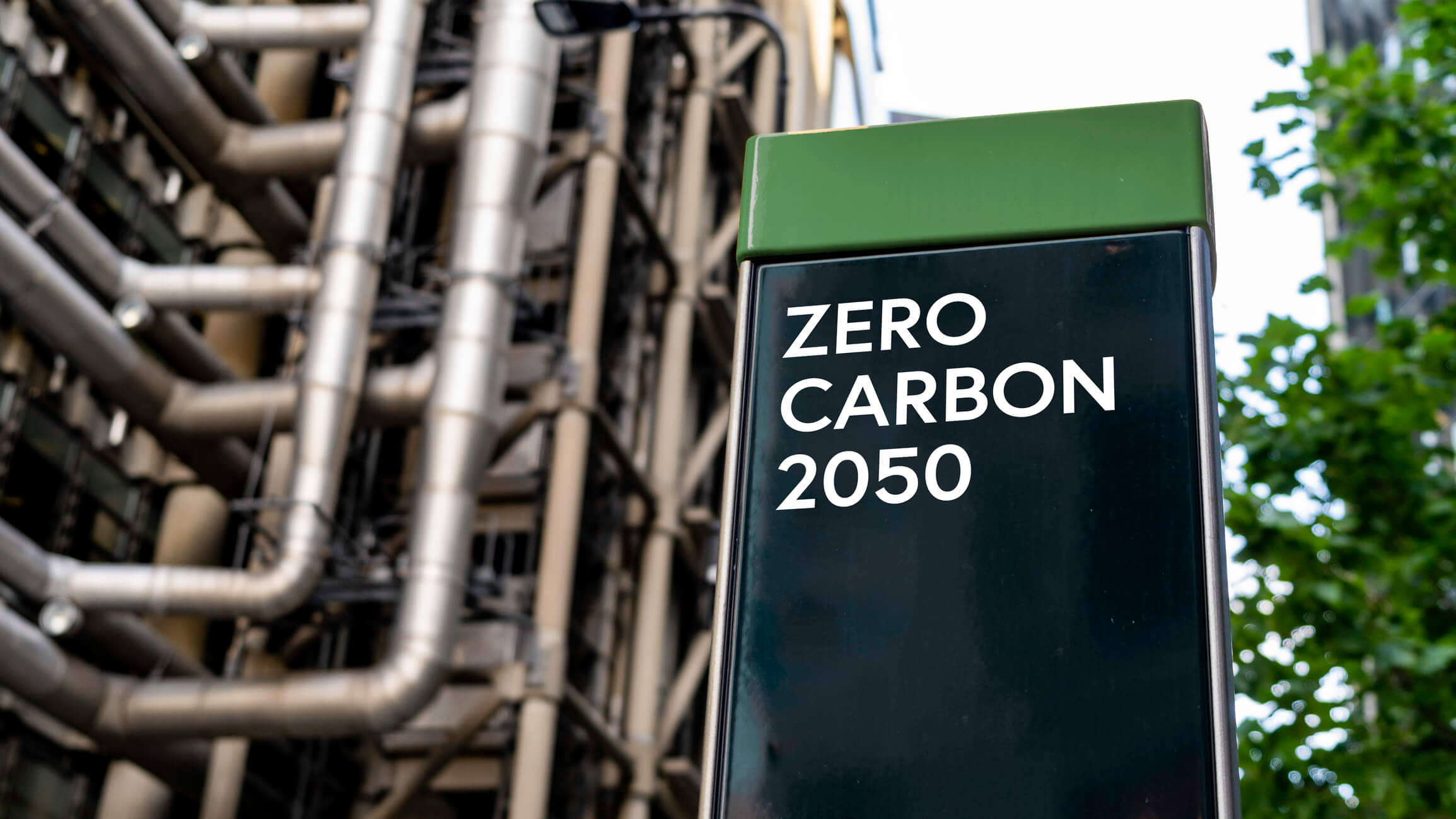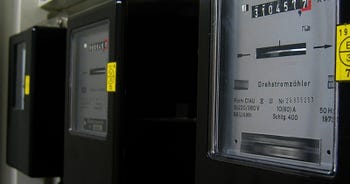What is carbon offsetting, and what does it mean for UK SMEs?
When you’re a small business just trying to get by, terms like ‘net zero’, ‘carbon offsetting’, and ‘carbon neutral’ can have you scratching your head.
But with the current global climate crisis threatening the Earth’s environmental, economic and social health, the time to act has never been greater. This is where carbon offsetting comes in.
In this Bionic guide, we’ll walk you through everything you need to know about offsetting business carbon emissions, what this means for your company and how you can go about doing it.

30-second Summary:
- Carbon offsetting helps businesses reduce greenhouse gas emissions and achieve a net-zero carbon footprint.
- Different carbon offsetting methods include carbon capture, carbon reduction, transitioning to renewable energy, and improving energy efficiency.
- Businesses can use carbon offsetting to align with sustainability goals, meet customer demands for sustainable products, fulfil environmental responsibilities, and attract employees who value sustainability.
- Carbon offsetting can help tackle climate change as part of a larger business strategy, encourage corporate responsibility, and promote sustainability.
- Carbon offsetting began in the 1970s but gained prominence in 1989 with an agriforest project in Guatemala. In the UK, the Woodland Carbon Code and the Peatland Code are accredited carbon offset schemes.
- Carbon offsetting can be perceived as greenwashing when not done sincerely or as a substitute for reducing the carbon footprint of a business. Transparency, credibility, and long-term commitment are important factors if a business acts on offsetting carbon.
What is carbon offsetting?
Carbon offsetting is a way for businesses to reduce the amount of greenhouse gas emissions they produce from their everyday actions in operations, products or services.
The main goal of carbon offsetting is to achieve a net-zero carbon footprint, where a business balances its emissions by investing in activities that help to reduce or remove a large amount of greenhouse gases from the atmosphere. This is usually done as part of a broader sustainability or corporate social responsibility initiative.
What are the different ways you can offset carbon emissions?
Offsetting carbon emissions is like making up for the carbon dioxide (CO2) we release into the atmosphere by investing in projects or practices that reduce or remove an equivalent amount of CO2. These projects fall into different categories, and together, they help combat climate change:
Carbon capture
This is the process of capturing carbon emissions produced by industrial processes and power generation before it's released into the atmosphere. Carbon capture works by:
- Capturing — CO2 is captured from sources like industrial facilities, power plants, or even the air itself using various technologies like absorption, adsorption, or membrane separation.
- Transporting – Once captured, the CO2 is transported through pipelines or other means to a suitable storage location.
- Storing — The captured CO2 is stored deep underground, typically in depleted oil and gas reservoirs, deep saline formations, or other porous rock caverns. This is often referred to as carbon capture and storage (CCS) or carbon sequestration.
Carbon capture technology is needed when tackling climate change because it allows us to reduce emissions from sectors that are hard to decarbonise fully, like intensive industries such as mining, chemical production, shipbuilding and more.
Carbon reduction
On the other hand, carbon reduction uses other means to reduce the overall amount of carbon dioxide (CO2) emissions. It involves decreasing the generation of CO2 in the first place by changing energy production, consumption, and lifestyle choices. The goal is to lower emissions at the source and minimise the impact of human activities on the climate.
But how can businesses implement a carbon reduction strategy?
- Transitioning to renewable energy — Shifting from fossil fuels to renewable energy sources like wind, solar, biomass or even hydropower, is the first place to start. These sources generate electricity without emitting carbon dioxide (CO2) and play a big part in reducing emissions from the energy sector. In fact, the UK's energy mix is actually made up of different energy sources, including renewables.
- Green transport — Modes of green transport aim to reduce emissions from the transportation sector, a big contributor to CO2 emissions. This includes using more electric vehicles (EVs), including cars, buses, and bikes, as well as the expansion and improvement of public transport. Creating pedestrian-friendly infrastructure and bike lanes encourages walking and cycling, helping to reduce carbon emissions.
- Energy efficiency — Improving energy efficiency is another great way for businesses to reduce their carbon emissions. In buildings, this could be opting for better insulation, choosing energy-efficient lighting or implementing a proper heating, ventilation and air conditioning (HVAC) system.
Why do businesses use carbon offsetting?
For many businesses, it simply isn’t about profit anymore. In recent years and likely continuing into the future, there’s been a big push for businesses, big and small, to make a difference to the world around them — from reducing their carbon footprint to implementing green energy strategies.
More and more businesses are trying to become more sustainable while staying profitable. Recently, there's been a big push for businesses, big and small, to make a difference to the world around them — from reducing their carbon footprint to implementing green energy strategies. This has been incentivised by the UK government, with local grants and even green tax reductions, like the Climate Change Levy (CCL) to get small business owners on board.
- Customers care about sustainability — No matter what products or services your business sells, it’s important to make sure that you’re taking the necessary steps to ensure you’re being as sustainable as possible — this includes during the production process, transportation and more. In fact, according to research from impact, 66% of global consumers are willing to pay more for sustainable goods. In comparison, 57% are willing to change their purchasing habits to reduce negative environmental impact.
- Businesses have an environmental responsibility — Many businesses recognise their role in contributing to climate change through their operations, supply chains, and products. Carbon offsetting allows them to take responsibility for their carbon emissions and demonstrate a commitment to environmental stewardship. 84% of consumers say that a business with a poor environmental track record would or may cause them to stop buying from the brand.
- Employees value a sustainable business — You may not think it, but employees value and want to work for businesses that prioritise sustainable practices. 71% of job seekers want to work for environmentally friendly employers, with 1 in 3 even going as far as to say they would accept a lower salary to work for a socially responsible and sustainable company.
What are the effects of carbon offsetting?
If businesses use carbon offsetting in the right way, it can offer a whole host of benefits for businesses and consumers alike:
- Slowing climate change — Carbon offsetting can make a real difference in the fight against climate change. By reducing or removing greenhouse gas emissions it helps slow down global warming and lessens the impacts of climate change, like extreme weather events and rising sea levels.
- Alignment with environmental goals — Carbon offsetting helps businesses align with important environmental goals, such as meeting the UK net zero goal by 2050. Whether it's aiming to be carbon neutral or meeting new, regulatory requirements, it shows the commitment to reducing our environmental impact to tackle climate change.
- Responsibility and accountability — Carbon offsetting encourages businesses to take responsibility for their carbon emissions. Business owners can show they know their impact on climate change and are committed to doing something about it. This accountability often leads to more transparency for consumers who walk through their doors.
- Transition to sustainability — Offsetting isn't just about cancelling out emissions; it's about supporting sustainability. Many offset projects involve sustainable practices like renewable energy, reforestation, and cleaner technologies. This means businesses are moving toward a greener, more environmentally friendly future.
When did carbon offsetting start?
The term ‘offsetting’ has been used since the 1970s, thanks to America’s ‘Clean Air Act’, which aims to reduce and control air pollution nationwide.
However, carbon offsetting began in 1989 with an agriforest in Guatemala. Applied Energy Services, an American electricity company, decided to finance an agriforest — a forest of commercial timber — to offset the emissions of their new, coal-fired power plant in Connecticut.
In 1997, The Kyoto Protocol — an international treaty linked with the United Nations Framework Convention on Climate Change (UNFCCC) — instructed that industrialised countries and economies have to limit and reduce their greenhouse gas emissions by their agreed individual targets. It only asks that those countries adopt policies and measures on reducing emissions and report on it periodically.
Are there any carbon offsetting schemes available in the UK?
As of 2023, there are currently no regulations in place by governing bodies in the UK for offsetting carbon emissions and no schemes businesses can apply for. However, the Woodland Carbon Code and the Peatland Code are the only two offset schemes accredited by the UK Environmental Agency.
The Woodland Carbon Code
The Woodland Carbon Code (WCC) is the UK’s voluntary carbon standard for woodland creation projects. It provides reassurance about the carbon savings that woodland projects can really achieve.
Essentially, it demonstrates the high standards of sustainable forest management and is able to make a genuine difference in terms of carbon reduction.
The Peatland Code
The Peatland Code is a voluntary certification standard for UK peatland projects that aim to market the climate benefits of peatland restoration. It provides assurances to voluntary carbon market buyers that the climate benefits being sold are permanent, real and quantifiable.
It's worth noting that there are private companies like Clear, that can help businesses become carbon-negative or neutral through high-quality carbon offset projects. But these can be costly and are not always affordable for your average UK business owner.
Is carbon offsetting greenwashing?
The question of whether carbon offsetting can lead to greenwashing or a legitimate environmental strategy is up for debate. It often depends on how it's practised and if the business behind it is sincere. Carbon offsetting is a complex subject and many companies and consumers have varying opinions on its effectiveness and ethics.
Here are some things to consider if you're thinking about carbon offsetting:
- Transparency and credibility — Carbon offsetting may be perceived as greenwashing when companies promote it to appear environmentally responsible without actually making an effort to reduce their own carbon emissions. To avoid this perception, it's key for businesses to be transparent about their emissions reduction efforts and the specific projects or initiatives they support through carbon offsetting.
- Long-term commitment — Ideally, carbon offsetting should be part of a broader, long-term sustainability strategy rather than a one-time action for public relations purposes.
- Emissions reductions vs offset — Carbon offsetting should complement efforts to lower emissions in the first place and not act as a substitute for reducing a business's own carbon footprint. Overreliance on offsetting without reducing overall emissions can be seen as an attempt to mask environmental impact.
Get your business set with Bionic
Offsetting your business's carbon emissions, when done properly, can be beneficial in your sustainability journey. If you need more advice get in touch today with the Bionic team.
We’re also on hand to help with your business energy needs, including business electricity and business gas. Or read up on more business energy topics by heading over to our energy guides section to find more content from our energy experts.








